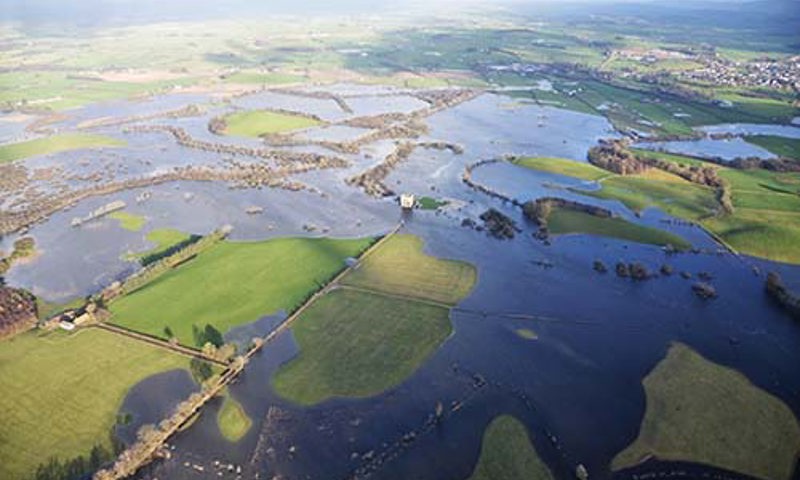Historic Environment Scotland (HES) is leading an international initiative to support communities across Northern Europe in assessing the impact of climate change on historic buildings, archaeological sites and other heritage locations.
Adapt Northern Heritage brings together 15 partners from Iceland, Ireland, Norway, Russia, Scotland and Sweden. The three year project –which started this month– aims to help communities adapt their historic sites to climate change and increase their resilience to its impacts.
As part of the project, HES is working with three project partners: Minjastofnun Íslands (Cultural Heritage Agency of Iceland), Riksantikvaren (Norway’s Directorate for Cultural Heritage) and Norsk institutt for kulturminneforskning (Norwegian Institute for Cultural Heritage Research). HES will also engage with eleven associated partners, including Argyll & Bute Council, the National Trust for Scotland and Timespan – Helmsdale Heritage & Arts Society.

To support communities in Europe’s remote northern regions, the project will develop an online tool to assess the climate related risks affecting historic places, and provide guidance for the planning of strategic adaptation measures to limit and manage these risks. The tool will be developed, tested and demonstrated in ten case studies across Northern Europe, two of which will be in Scotland: the historic town of Inverary in Argyll and Bute and Threave Castle and Estate in Dumfries and Galloway. The project will also create a community network with a discussion platform, round table workshops and training events.
Ewan Hyslop, Head of Science and Technical Research at HES, said: “There are a number of challenges faced by regions in Europe’s Arctic and Northern periphery, with its remote locations and geographically dispersed communities, which make it difficult to manage cultural heritage in ways which actively take climate change into account.
“Adapt Northern Heritage will support stakeholders by helping to build capacity and provide tools that will enable communities and authorities in northern European regions to cope better with the complexities of historic site management in times of a changing climate.”
Gudmundur Sigurdarson, project manager at Minjastofnun Íslands, added: “Experiences of conserving cultural heritage in Scotland might well become helpful in Iceland, considering how drastically our climate is likely to change over the coming decades.
“The project case studies will be informative and helpful for anyone trying to plan for the future of historic sites in the 21st century.”
About Historic Environment Scotland (HES)
- We are the lead public body charged with caring for, protecting and promoting the historic environment. We will lead on delivering Scotland’s first strategy for the historic environment, Our Place in Time.
- Historic Scotland is a sub brand of HES.
- View our press pack and keep up to date by registering for media release email alerts. If you wish to unsubscribe, please contact us.
Year of History, Heritage and Archaeology 2017
2017 is the Year of History, Heritage and Archaeology (HHA), a year that will celebrate Scotland’s people, our distinct culture and traditions, our historic landscapes, attractions and icons as well as our hidden gems and amazing stories. From World Heritage Sites to ancient monuments, listed buildings to historic battlefields, cultural traditions to our myths, stories and legends, 2017 is the year to explore Scotland’s fascinating past. This is a Scottish Government initiative being led by VisitScotland and a variety of partners.
Get involved on Twitter with #HHA2017
Follow Historic Environment Scotland
Twitter: @HistEnvScot | @welovehistory
Facebook: @HistoricEnvScotland | @VisitHistoricScotland
For further information
Claire Mullaney
Historic Environment Scotland Media Office
Direct Line: 0131 668 8588
Mobile: 07881 512 379
claire.mullaney@hes.scot


